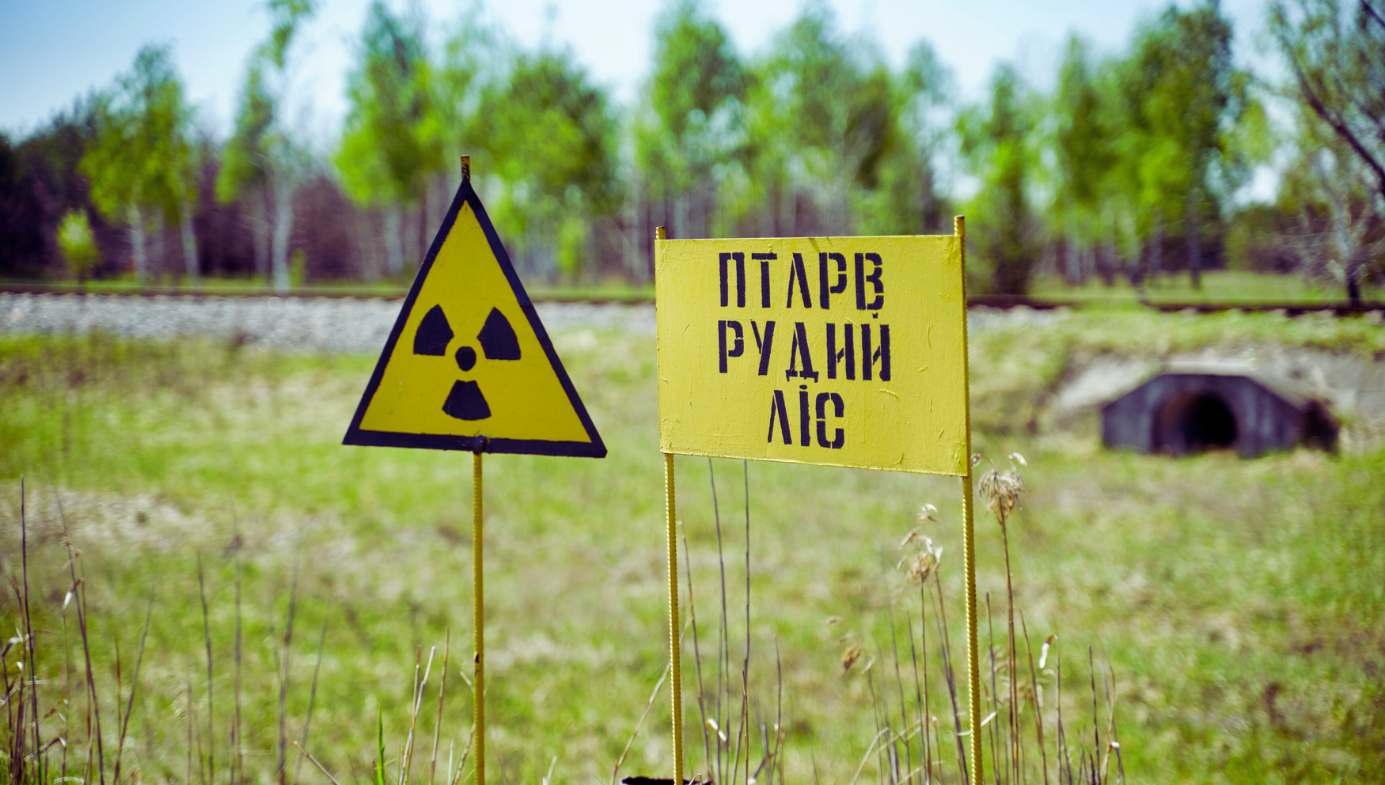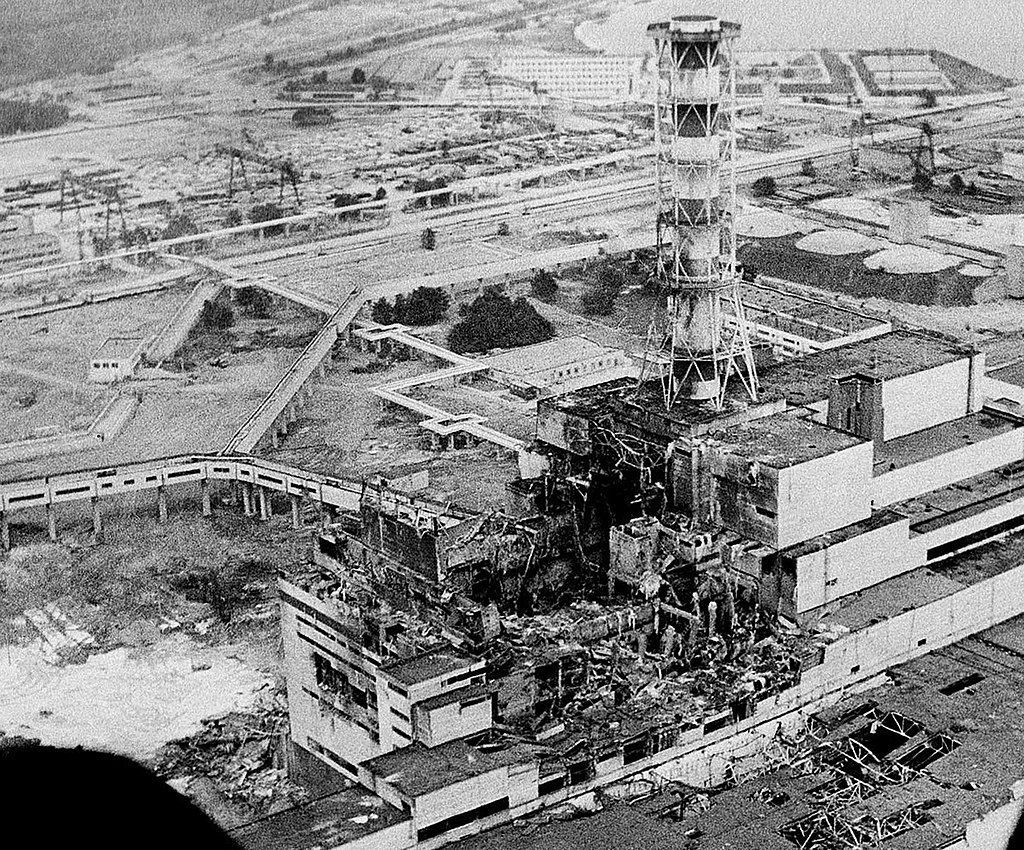Nuclear Energy
Chernobyl Revisited
Much of the tragedy resides in our collective response to the meltdown.

On April 26th, 1986, operators at the Chernobyl nuclear power plant conducted a poorly designed experiment with the Unit 4 reactor. After commencing the test, the operators waited too long to shut down the reactor, triggering extreme volatility. As they attempted to shut it down, steam began to form in the water surrounding the nuclear fuel, leading to runaway heat and power levels that caused the reactor to explode.
For 10 days, it spewed radioactive material, which spread across Europe, exposing millions to harm. Death tolls from radiation-induced cancers reached into the hundreds of thousands, according to some studies. Workers at the plant received the most concentrated doses; many later died from Acute Radiation Syndrome (ARS). Soviet, Ukrainian, and Belarussian authorities evacuated 350,000 citizens over several years and dispatched over 600,000 workers, called liquidators, to decontaminate the area. They eventually cordoned off from the general public an area of 4,300 square kilometers.

Public outcry against nuclear energy was swift. In the West, the governments of Denmark, Sweden, and the Philippines promised to abandon their nuclear programs. Within a year, nine other nations either postponed or ended their plans for reactor construction. In Eastern Europe, protests against nuclear energy erupted in Lithuania and Ukraine in 1989 following policy changes from the Kremlin. Opinion polls revealed that, since Chernobyl, two-thirds of humanity opposed the further development of nuclear energy.
The Chernobyl accident is rightly terrifying. Some opponents of the technology wield the accident as evidence of nuclear energy’s profound safety risk to humans and the planet. They are wrong to do so.
The death toll from Chernobyl was radically lower than the worst-case studies have claimed. The United Nations has released several reports that have analyzed the radiation deaths through extensive reviews of the existing scientific literature and concluded that the accident likely caused only a few hundred deaths at most. According to the UN, only 28 of the 134 workers and emergency personnel died who had suffered from ARS.
The UN reported in 2008 that the accident will likely have caused 16,000 cases of thyroid cancer by 2065, but that type of cancer has a death rate of one percent, suggesting that, by 2065, Chernobyl may have contributed to 160 deaths due to thyroid cancer. In 2018, the UN revised its estimate to 5,000 cases of thyroid cancer—or 50 projected attributable deaths.
Leukemia is a widely feared side effect of radiation, but the UN found only a slight increase in leukemia among recovery workers. In a review of the scientific literature on the subject, the UN determined that the studies examining leukemia rates among liquidators are inconclusive and have “low statistical power, uncertainties in dose reconstruction, and internal inconsistencies.” The UN used the health impacts among recovery workers as a proxy for adults in the general public, so elevated cancer rates due to the accident among adults are unlikely as well. Among children, no measurable increase in leukemia has been seen, including those exposed in utero. Regarding other impacts, there is likely to be no measurable increase in levels of autoimmune thyroiditis, cardiovascular and cerebrovascular diseases, and all solid cancers combined.
Why? It turns out that many cleanup workers and the majority of residents in the areas deemed “contaminated” received doses similar to a year’s worth of natural background radiation. The liquidators were closely monitored and sent home for the year after six months in the field.
So where do the extreme mortality estimates, or at least those significantly higher than the UN tally, come from? They are usually based on the flawed linear no-threshold (LNT) model. LNT assumes that all radiation exposure, no matter how small the dose, has adverse health consequences—which is unlikely to be true.
There are natural experiments that complicate the LNT hypothesis. Yangjiang, China, has three times the background radiation as a neighboring city, yet a study of over 100,000 Yangjiang residents and a corresponding control group in the neighboring city found that residents in Yangjiang did not have elevated cancer risk.
A similar study was conducted in the Iranian city of Ramsar, which has the highest measured background radiation levels in the world at up to 200 times higher than the global average. Researchers found that Ramsar residents actually had lower rates of cancer than the control groups.
In an interview, nuclear engineer and radiation specialist David LeClear described how the more extreme mortality estimates are reached through LNT. “You can take one millirem, which is a very tiny tiny amount of radiation, and do a dose estimation over several billion people and you can come up with a death number. Even though that’s kind of like saying that being spritzed with water from a little spray bottle makes you more wet even though you are standing in the pouring rain.”
However, LNT is supported by many scientists. In an interview, radiation expert Dr Timothy Mousseau of the University of South Carolina defended LNT, saying, “The National Academy of Sciences has reviewed this topic a few times, and the consensus among most scientists in this field is that until we have a better idea, the linear no threshold model is the best one to work with.” Mousseau himself pointed to a leading study that puts the death count from Chernobyl nearer 18,000.
Let’s say it’s a wash. Even at Mousseau’s preferred figure, the deaths from Chernobyl are not deal-breakers once they are put into context. Humanity must deploy new nuclear power to end fossil fuel combustion, which kills millions each year. Already, nuclear has saved over 1.8 million lives through the displacement of fossil fuels.
The magnitude of the Chernobyl exclusion zone and evacuations didn’t reflect the actual need. Instead of strictly demarcating hazardous areas, the authorities followed major roads, boundaries, and waterways to better manage people. Plus, much of the zone saw levels of radioactivity fall dramatically in a few years. In the words of Dr Mousseau, “More than half the zone is non-radioactive, and has mostly been so following a few years after the initial depositions.”
The majority of the evacuees never needed to leave their homes. The authorities evacuated 220,000 people in 1990, but the avoided doses of radiation were too small to justify evacuation, according to a recent study. Some studies have contended that even many of the initial evacuations should not have happened.
Rehabilitating the usefulness of the impacted area began soon after the accident, beginning with the nuclear plant itself. The need for electricity in the coming winter was so dire and their reputational damage so great that the Soviet leadership demanded that Units 1, 2, and 3 of the plant be brought back online quickly.
To achieve this task, liquidators pumped flooded hallways, tore up concrete, stripped walls, and flushed ventilation systems. Wearing lead-lined clothes, they shoveled bits of the shattered reactor off the roof of Unit 3 into the bowels of Unit 4. The liquidators who braved the rooftop felt as if their mouths were filled with metal and their blood had been drained from their bodies. But they succeeded. Unit 1 came online just five months after the accident and was eventually followed by Units 2 and 3.
Despite the trauma of this experience, the workers at Chernobyl protested when the Ukrainian government closed Unit 3 in 2000. In response to the closure, Yevgeny Lobtsov, who had begun working at the facility two months after the accident, told the New York Times, “I don’t know what will be done for my children now.”
Resettlement is occurring in the exclusion zone. In 2010, the Belarussian government announced that it was reopening areas of the zone for residential and agricultural use that had once held 137,000 citizens. Ukraine opened up the zone to tourism in 2019.
Even with this context added to the Chernobyl disaster, it was still truly awful. Fortunately, should current safety standards continue—and there’s little reason to think they won’t—another Chernobyl simply isn’t possible.
The Chernobyl reactor, the Soviet-designed RBMK-1000, blew up because of design flaws not shared by any reactors today. To simplify, the RBMK exploded because it heated up uncontrollably when steam formed in the coolant system surrounding the reactor. Today’s reactors cool down when steam forms. Plus, unlike the RBMK, modern reactors are contained in concrete and steel domes that are designed to withstand steam explosions. A commercial airliner could fly into a containment dome without piercing it.
LeClear believes currently used designs are impervious to a Chernobyl-scale disaster. “With the designs out there, it’s just not possible to get what happened at Chernobyl. Even modern RBMKs that ran for a long time had major changes in the way they did things. We learned and we improved, and that’s what we do in any industry, especially in the nuclear industry.” Today, there are eight refurbished RBMK reactors still operating, including two at the Leningrad nuclear power plant just 73 kilometers west of St Petersburg.
Soviet safety culture is not representative of today’s global nuclear industry. The Chernobyl operators disobeyed orders. They didn’t communicate with each other. And the plant lacked even basic precautions such as having on-site firefighters.
Nuclear plants in the US, for example, do not have the same problems. Westinghouse, one of the biggest nuclear companies in the US, has enmeshed open communication in all of their operations. Should an employee see a wrench out of place, an open door that should be closed, or need to ask a supervisor a question, they submit that into a digital system that everyone can access and see. Employees even have to report if they trip and fall.
Mark Nelson, energy expert and consultant at Radiant Energy Group, said in an interview, “Since Chernobyl, the global nuclear industry has achieved through peer-policing a performance standard that exceeds even the airline industry.”
But what about war? Russia’s invasion of Ukraine shows why military invasions are unlikely to cause another Chernobyl. The Russians have stationed artillery units around the Zaporizhzhia nuclear power plant. Some shells, likely Russian, have hit buildings at the plant. No damage to the reactors themselves occurred. Today, all six reactors are turned off. Should the reactors be damaged or start to melt down due to loss of access to cooling water, they still couldn’t explode like Chernobyl.
Much of the tragedy of Chernobyl resides in the response to the meltdown. People exposed to harmless doses of radiation reported increased levels of depression, anxiety, and medically unexplained physical symptoms. In response to the accident, it was estimated in 1987 that over 100,000 wanted pregnancies were aborted in Western Europe. The Chernobyl Forum, an organization that is part of the UN, concluded that “the mental health impact of Chernobyl is the largest public health problem unleashed by the accident to date.”
The revolt against nuclear power based on Chernobyl fears has led to thousands of needless deaths and the release of large amounts of avoidable carbon emissions. Given the trauma of the accident, the repulsion is understandable. But the facts are now known, and they reveal a simple truth: we should have never feared nuclear energy.





